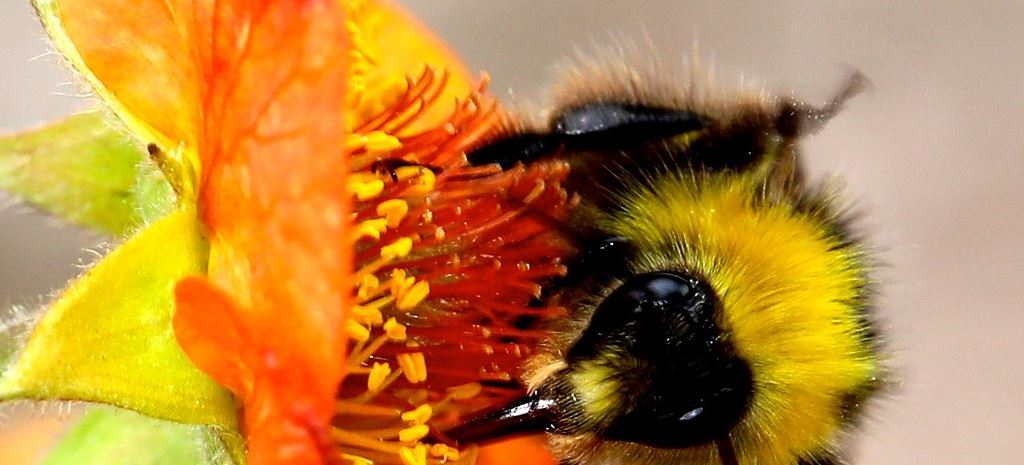As you drive past three new utility-scale arrays in Maryland and Florida, you likely won’t notice a difference. But the bumble bees on which so much of the U.S. food supply depend for pollination will, and they’ll be thankful.
Over the past decade or so, bumble bee populations in the United States have been plummeting thanks to a phenomenon called “colony collapse” (the author was the editorial director of Pest Management Professional during the height of the controversy). Scientists could never definitively identify the reasons for the collapse, though most environmental activists blamed the use of neonicotinoid pesticides.
(Neonicotinoids act like nerve gas on insects and yes, as the name implies they are based on tobacco-like substances.)
Where were we? Oh, right, the solar connection.
To combat “colony collapse”, two solar developers – Cypress Creek Renewables and Florida Power & Light (FPL) – have built three utility-scale solar farms that are landscaped with native plants and flowers to provide rich habitats to support the bees’ flagging populations.
In Maryland, which actually has a law giving preference to solar farms that protect the bees, Cypress Creek has built the 9 MW Baker Point Solar Farm in Frederick County.In addition to the more than 34,000 solar modules, the site will also be home to honey-producing hives that each produce an average of 30 pounds of honey each season.
Don’t worry, though: The bees will not be left to the tender mercies of Cypress Creek’s engineers to ensure their survival. An acclaimed University of Maryland honeybee biologist will oversee the bees’ foraging for nectar and pollen throughout the site, encouraged by the inclusion of nine different species of native long-stemmed and short-growing flowers and warm-season grasses into the project.
And in Florida, whose orange groves depend on high bee populations, FPL is partnering with Audubon Florida to create “Solar Sanctuary” sites, which will be host to the native birds and bees through a program leaving some of the land around the project untouched.
FPL has committed to building eight new solar farms by the end of next year, and each of them will be included in the Solar Sanctuary program. Among the enhancements to the sites to accommodate Florida wildlife include:
- Creating pollinator-friendly habitat areas to provide ample food sources for insects, songbirds and hummingbirds;
- Planting vine species to provide a food source for native and migratory hummingbird species;
- Planting native vegetation as a buffer near property edges, which will provide food sources and nesting habitat for a variety of songbirds such as bluebirds and wintering sparrows;
- Preserving wetlands and surface waters to provide habitat for a variety of wetland-dependent wildlife species such as frogs, snakes, turtles and wading birds;
- Protecting existing gopher tortoise habitat, including burrows; and
- Planting native groundcover and shrubs to provide additional food and shelter for birds and wildlife.
So add bumble bee protection to the environmental benefits solar brings to the United States. Now the only challenge is to figure out how the bumble bees will figure into the next “value of solar” calculations.
This content is protected by copyright and may not be reused. If you want to cooperate with us and would like to reuse some of our content, please contact: editors@pv-magazine.com.








By submitting this form you agree to pv magazine using your data for the purposes of publishing your comment.
Your personal data will only be disclosed or otherwise transmitted to third parties for the purposes of spam filtering or if this is necessary for technical maintenance of the website. Any other transfer to third parties will not take place unless this is justified on the basis of applicable data protection regulations or if pv magazine is legally obliged to do so.
You may revoke this consent at any time with effect for the future, in which case your personal data will be deleted immediately. Otherwise, your data will be deleted if pv magazine has processed your request or the purpose of data storage is fulfilled.
Further information on data privacy can be found in our Data Protection Policy.